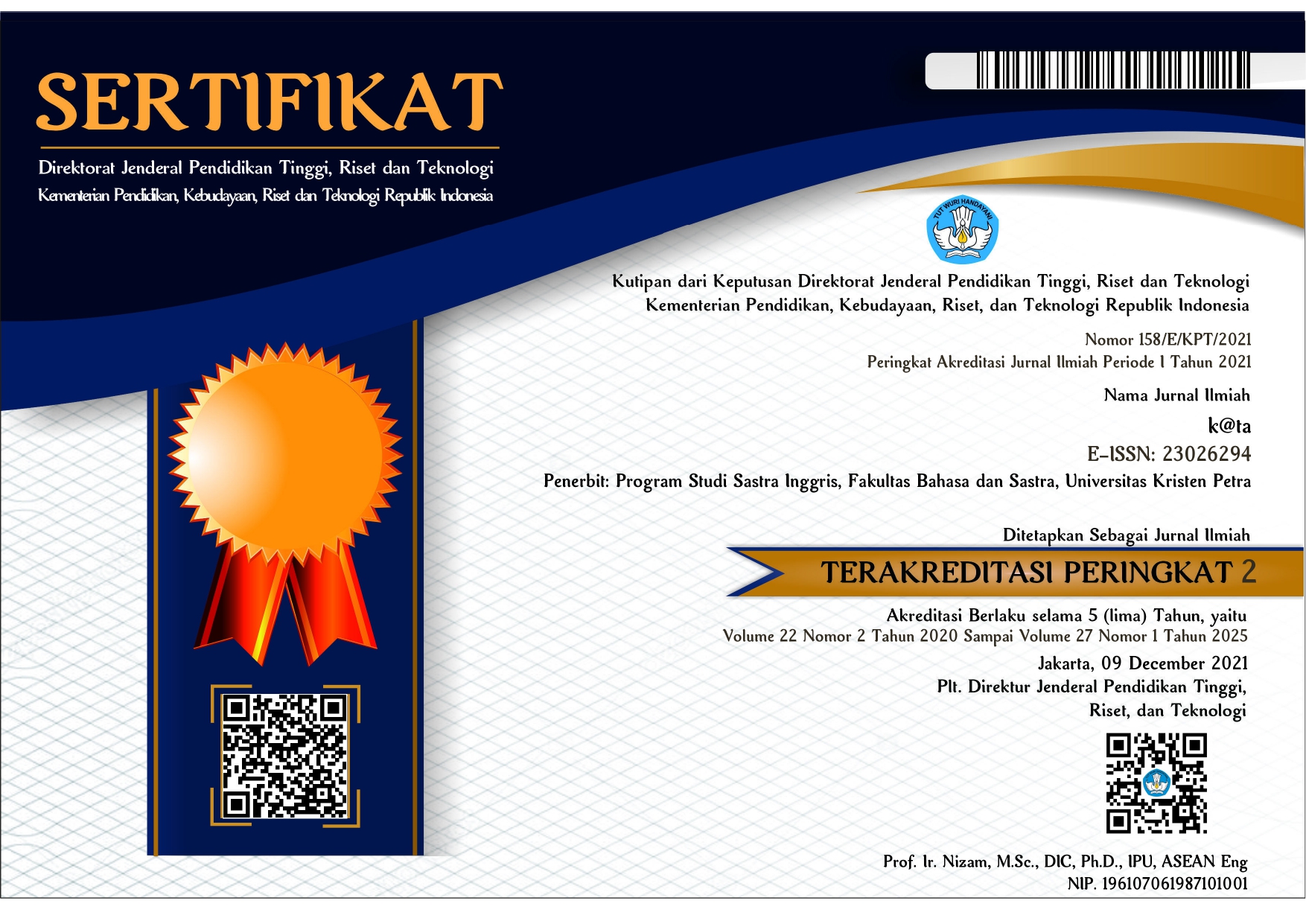The Encoding / Decoding Model on Keats’s “Ode on a Grecian Urn†as a Thing
Abstract
John Keats, a main figure in the second generation of Romantic poets, was not generally well received by his contemporary critics, though during the course of time, he has become one of the most beloved poets. Stuart Hall proposes an analytical model of communication, namely the encoding / decoding model, which assumes a complex structure of relations to be produced and sustained through linked but distinctive moments which are termed as production, circulation, distribution/ consumption, and reproduction. This paper employs Hall’s encoding / decoding communication model as a yardstick to move beyond his approach, which mainly addresses modern mass media and communication system, and relate the distinctive moments playing integrally in encoding and decoding to Keats’s Ode on a Grecian Urn (1819). Furthermore, there is an attempt to turn the spotlight on the ode’s durability after the French Revolution passions abate and the poem starts to gain its thingness.
Downloads
References
Arnold, Matthew. Lectures and Essays in Criticism. (1990). R. H. Supr (Ed.). Ann Arbor: University of Michigan Press.
Bennett, Jane. (2012). "Powers of the hoard: further notes on material agency", in Cohen, Jeffrey, Animal, vegetable, mineral: ethics and objects, Washington, DC: Oliphaunt Books an imprint of Punctum Books, pp. 237–269.
Brooke, Stopford Augustus. (1920). Studies in Poetry. Reprint. London: Forgotten Books, 2013.
Brown, Bill. (2001). “Thing Theoryâ€, Critical Inquiry, 28 (1), 1-22.
Cole, Andrew. (2013). “The Call of Things: A Critique of Object-Oriented Ontologiesâ€, Minnesota Review, 80, 106-118.
Colvin, Sidney. (1920). John Keats. London: Macmillan.
Cuddon, J.A. (1998). Dictionary of Literary Terms and Literary Theory, 4th ed., London: Penguin Books.
Day, Aidan. (1996). Romanticism. London: Routledge.
Dowden, Edward. (1897). The French Revolution and English Literature. London: Kegan Paul.
Edgar, Andrew & Sedgwick, Peter. (2002). Cultural Theory: The Key Thinkers. London: Routledge.
Hall, Stuart. & Hobson, D. & Lowe, A. & Willis, P. (2005). Culture, Media, Language. New York: Taylor & Francis e-Library.
Keats, John. (1970). Letters of John Keats. Robert Gittings (Ed.). Oxford: Oxford University Press.
Keats, John. (1944). John Keats: The Poems. Gerald Bullet (Ed.). New York: Everyman’s Liberay.
Keats, John. (2013). The Complete Poetical Works and Letters of John Keats. 1899. Reprint. London: Forgotten Books.
Matthews, G. M. (1971). John Keats: The Critical Heritage. New York: Barnes & Noble Publishers.
White, R. S. (1987). Keats as a Reader of Shakespeare. London: The Athlone Press.

This work is licensed under a Creative Commons Attribution 4.0 International License.
![]() This work is licensed under a Creative Commons Attribution License
This work is licensed under a Creative Commons Attribution License



.png)
.png)

.png)












